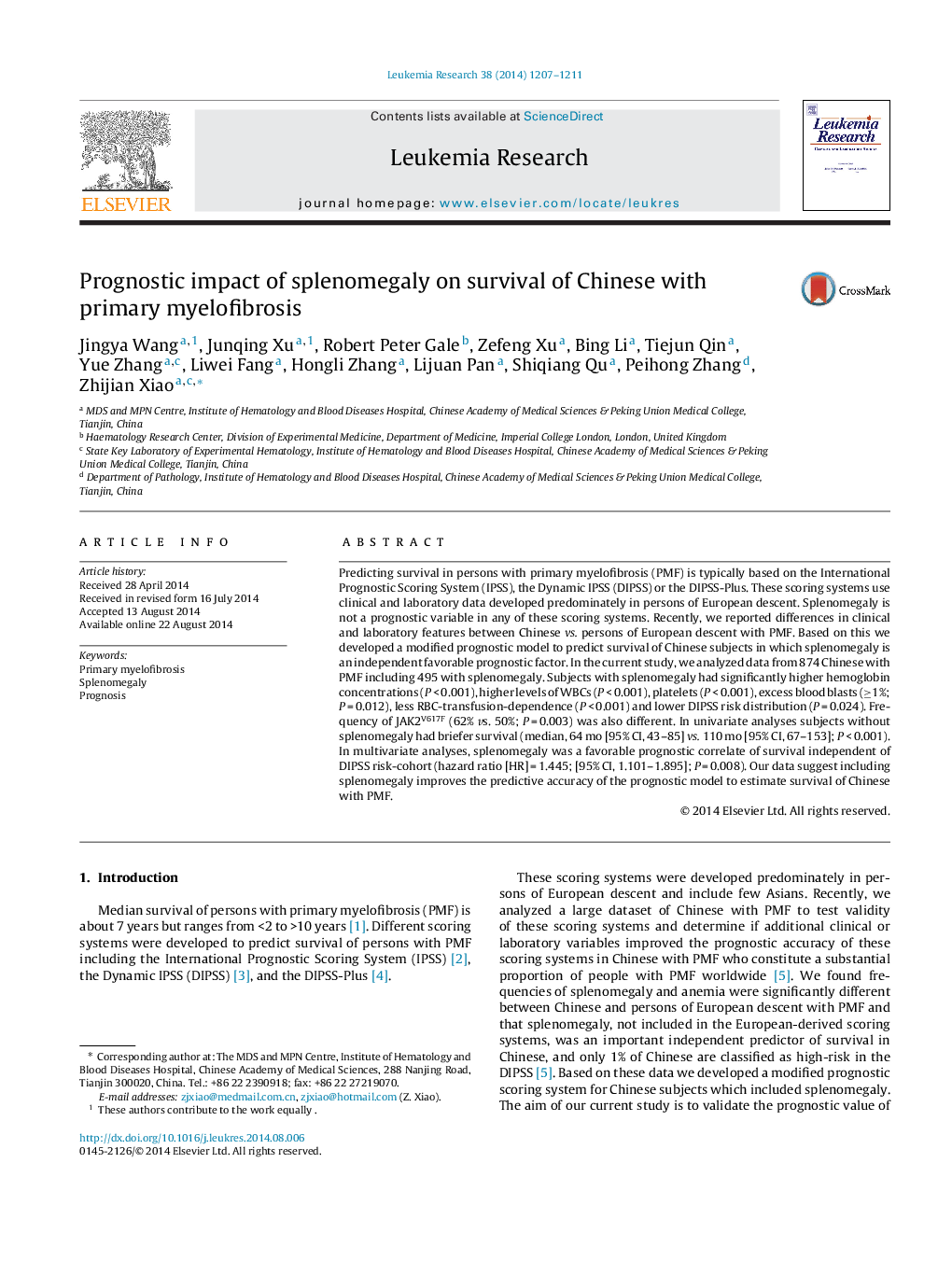| Article ID | Journal | Published Year | Pages | File Type |
|---|---|---|---|---|
| 10908697 | Leukemia Research | 2014 | 5 Pages |
Abstract
Predicting survival in persons with primary myelofibrosis (PMF) is typically based on the International Prognostic Scoring System (IPSS), the Dynamic IPSS (DIPSS) or the DIPSS-Plus. These scoring systems use clinical and laboratory data developed predominately in persons of European descent. Splenomegaly is not a prognostic variable in any of these scoring systems. Recently, we reported differences in clinical and laboratory features between Chinese vs. persons of European descent with PMF. Based on this we developed a modified prognostic model to predict survival of Chinese subjects in which splenomegaly is an independent favorable prognostic factor. In the current study, we analyzed data from 874 Chinese with PMF including 495 with splenomegaly. Subjects with splenomegaly had significantly higher hemoglobin concentrations (P < 0.001), higher levels of WBCs (P < 0.001), platelets (P < 0.001), excess blood blasts (â¥1%; P = 0.012), less RBC-transfusion-dependence (P < 0.001) and lower DIPSS risk distribution (P = 0.024). Frequency of JAK2V617F (62% vs. 50%; P = 0.003) was also different. In univariate analyses subjects without splenomegaly had briefer survival (median, 64 mo [95% CI, 43-85] vs. 110 mo [95% CI, 67-153]; P < 0.001). In multivariate analyses, splenomegaly was a favorable prognostic correlate of survival independent of DIPSS risk-cohort (hazard ratio [HR] = 1.445; [95% CI, 1.101-1.895]; P = 0.008). Our data suggest including splenomegaly improves the predictive accuracy of the prognostic model to estimate survival of Chinese with PMF.
Related Topics
Life Sciences
Biochemistry, Genetics and Molecular Biology
Cancer Research
Authors
Jingya Wang, Junqing Xu, Robert Peter Gale, Zefeng Xu, Bing Li, Tiejun Qin, Yue Zhang, Liwei Fang, Hongli Zhang, Lijuan Pan, Shiqiang Qu, Peihong Zhang, Zhijian Xiao,
